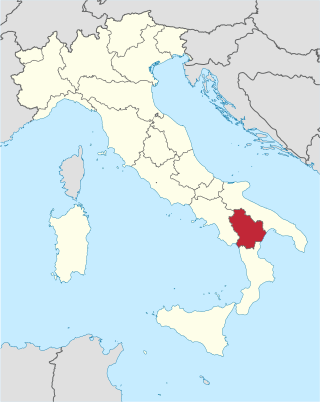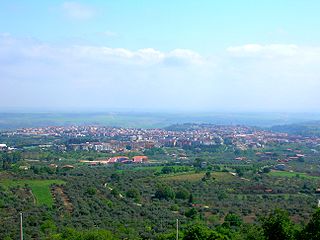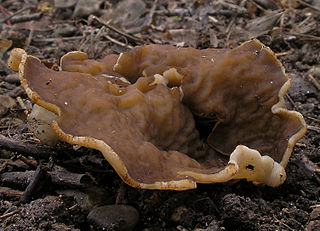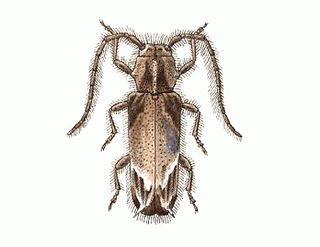
Basilicata, also known by its ancient name Lucania, is an administrative region in Southern Italy, bordering on Campania to the west, Apulia to the north and east, and Calabria to the south. It has two coastlines: a 30-km stretch on the Tyrrhenian Sea between Campania and Calabria, and a longer coastline along the Gulf of Taranto between Calabria and Apulia. The region can be thought of as the "arch" of the "boot" of Italy, with Calabria functioning as the "toe" and Apulia the "heel".

Carlo Gesualdo da Venosa was an Italian nobleman and composer. Though both the Prince of Venosa and Count of Conza, he is better known for writing madrigals and pieces of sacred music that use a chromatic language not heard again until the late 19th century. He is also known for killing his first wife and her aristocratic lover upon finding them in flagrante delicto.

Venosa is a town and comune in the province of Potenza, in the southern Italian region of Basilicata, in the Vulture area. It is bounded by the comuni of Barile, Ginestra, Lavello, Maschito, Montemilone, Palazzo San Gervasio, Rapolla and Spinazzola. It is one of I Borghi più belli d'Italia.

Maschito is a town and comune of the province of Potenza, in the Basilicata region of southern Italy. Like other towns in the Vulture area, Maschito was repopulated by Albanian refugees after the occupation of Albania by the Ottoman Empire.

Rapana venosa, common name the veined rapa whelk or Asian rapa whelk, is a species of large predatory sea snail, a marine gastropod mollusc or whelk, in the family Muricidae, the rock shells.

Robert Venosa was an American painter of fantastic realist and visionary paintings.
The Italian Catholic diocese of Venosa, in southern Italy, existed until 1986. In that year it was united into the Diocese of Melfi-Rapolla-Venosa. From 1976 to 1986, Venosa had been a suffragan of the archdiocese of Potenza e Marsico Nuovo.

Disciotis venosa, commonly known as the bleach cup, veiny cup fungus, or the cup morel is a species of fungus in the family Morchellaceae. Fruiting from April, they are often difficult to locate because of their nondescript brown color.
Chione is a monotypic genus of flowering plants in the family Rubiaceae containing the single species Chione venosa. It is native to the neotropics, occurring in most of Mexico, and throughout Central America, the Caribbean, Colombia, Ecuador, and Peru. It is typically a tree growing 10 to 20 meters tall. In harsh habitats, it may be dwarfed and shrubby. It has no known economic use.

The Abbey of Santissima Trinità or Abbey of the Most Holy Trinity, Italian: Abbazia della Santissima Trinità, is a Roman Catholic abbey complex at Venosa, in the Vulture area of the province of Potenza, in the southern Italian region of Basilicata. The architecture of the abbey shows Roman, Lombard, and Norman influences. The complex lies within the Parco Archeologico of Venosa, approximately 1.5 km north-east of the town; it falls under the Roman Catholic Diocese of Melfi-Rapolla-Venosa. It consists of the old church, of uncertain date; the monastery buildings; and the Incompiuta, the unfinished or new church, begun in the last quarter of the eleventh century and never completed. The complex was declared a National Monument by Royal Decree on 20 November 1897. It is no longer a monastery, but is used by the Trinitarian Order.

Cyclanoline is an acetylcholinesterase inhibitor isolated from Stephania venosa tuber.

Desmiphora is a genus of longhorn beetles of the subfamily Lamiinae, containing the following species:
Desmiphora neoflavescens is a species of beetle in the family Cerambycidae. It was described by Galileo and Martins in 1998. It is known from Brazil.
Desmiphora santossilvai is a species of beetle in the family Cerambycidae. It was described by Galileo and Martins in 2003. It is known from Brazil and French Guiana.
Desmiphora auatinga is a species of beetle in the family Cerambycidae. It was described by Martins and Galileo in 1996. It is known from El Oro: Machala Ecuador.

Desmiphora canescens is a species of beetle in the family Cerambycidae. It was described by Henry Walter Bates in 1874. It is known from Colombia, Mexico, and Venezuela.
Desmiphora picta is a species of beetle in the family Cerambycidae. It was described by Stephan von Breuning in 1943. It is known from Argentina.
Desmiphora bijuba is a species of beetle in the family Cerambycidae. It was described by Giesbert in 1998. It is known from Mexico.
Desmiphora maculosa is a species of beetle in the family Cerambycidae. It was described by Linsley and Chemsak in 1966. It is known from the Galapagos Islands.

Fontainea venosa, also commonly known as southern blushwood, veiny fontainea, Queensland fontainea and formerly named as Bahrs scrub fontainea is a rare rainforest shrub or tree of the family Euphorbiaceae. It is found in southeastern Queensland, Australia, extending from Boyne Valley to Cedar Creek and is considered vulnerable due to several contributing threats. The total population size is around 200 plants.











